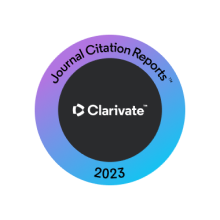Abstract
Objective: The right-sided positioning of heart during embryonic development is termed dextrocardia, and it may be isolated or associated with visceral dextroposition or malformation. However, there are few studies on the condition. This study aimed to determine the incidence of cardiac and non-cardiac malformations, long-term follow-up, and survival analysis of patients with dextrocardia. Methods: This was a retrospective chart review of dextrocardia cases at King Faisal Specialist Hospital & Research Centre in Riyadh, Saudi Arabia from April 22, 1975, to December 31, 2016. A total of 259,246 transthoracic echocardiograms from that period were reviewed, and 357 patients were included in the analysis. Results: The incidence of dextrocardia was approximately 1 in 28,571 pregnancies (0.35 per 10,000 pregnancies). Most patients with dextrocardia were between 2–18 years old (n= 252, 70.6%). The most common type was isolated dextrocardia (situs solitus), followed by situs inversus totalis, and situs ambiguous. The most common congenital cyanotic heart diseases were double outlet right ventricle (n=55, 15.5%) and pulmonary atresia (n=35, 9.8%). The most common acyanotic congenital abnormalities were ventricular (n=152, 42.7%) and atrial (n=121, 34.2%) septal defects. Overall survival in the study population was approximately 83%. Survival rates varied by situs type, with the highest rates observed in patients with situs inversus (96%), followed by those with situs solitus (91%), and situs ambiguous (55%). Moderate to severe pulmonary hypertension was significantly associated with a reduction in overall survival. The most common non-cardiac anomalies observed were gastrointestinal and urogenital abnormalities. Conclusion:This study describes the largest regional cohort of patients with dextrocardia, providing important insights into dextrocardia and outcomes of different intracardiac defects in our community. Our findings confirm that complex congeni
Recommended Citation
ALGhasab, Naif Saad; Alshehri, Bandar; ALMesned, Sulaman; Harbi, Hassan; ALAmeer, Reem; ALShehri, Fahad; ALZeid, Ahmad; ALZhrani, Meshari; ALMutiri, Ghazi T.; Al-Saud, Sara Abou; Alobaid, Fahad; Alnajashi, Khalid S.; Fogacci, Federica; Cicero, Arrigo F.G.; and Kharabsheh, Suleiman M.
(2025)
"Incidence, Associated Abnormalities, and Outcomes of Dextrocardia: A Registry-Based Study in Saudi Arabia,"
Journal of the Saudi Heart Association: Vol. 37
:
Iss.
3
, Article 6.
Available at: https://doi.org/10.37616/2212-5043.1438
Creative Commons License

This work is licensed under a Creative Commons Attribution-Noncommercial-No Derivative Works 4.0 License.




